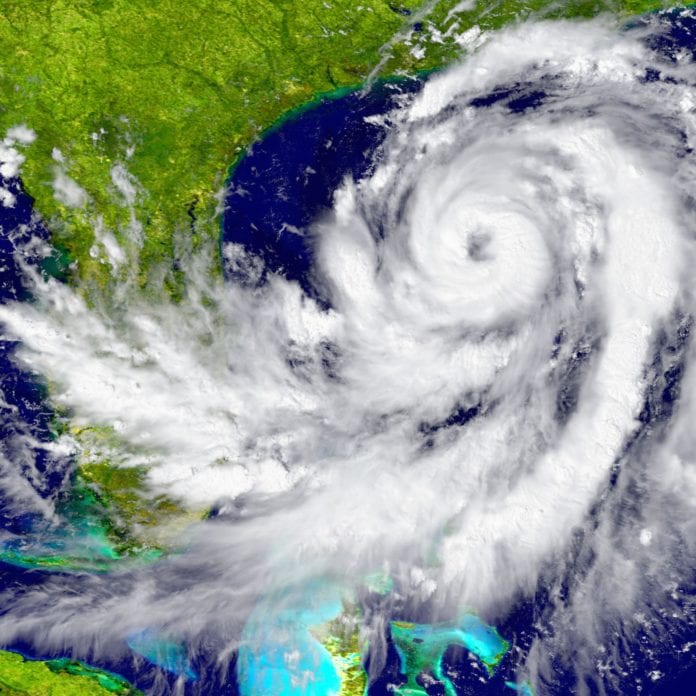Auction proceeds despite concerns from House members, science agencies on potential impact to weather data gathering
The Federal Communications Commission’s auction of millimeter wave spectrum at 24 GHz raised $284 million in its first round of bidding and ended its first day with $304 million in bids.
Auction 102 started as planned on Thursday, despite bipartisan objections from several House members, NASA and the National Oceanic and Atmospheric Administration, which have expressed concern to the FCC that the agency is pushing ahead with 5G development that could potentially impact weather data collection operations in adjacent bands and hamper the nation’s weather forecasting capabilities.
The letter to FCC Chairman Ajit Pai from the House Committee on Science, Space and Technology Chair Eddie Bernice Johnson (D-Texas) and Ranking Member Frank Lucas (R-Oklahoma), dated March 13, said that “given the frequency spectrum being considered and at the FCC’s suggested noise limit, there is the potential for signal interference with Earth observation sensors for weather and climate forecasting which operate at adjacent frequencies. This could pose a serious risk to the American public, and … the FCC should engage with the National Oceanic Administration, the National Aeronautics and Space Administration and the Department of Defense to ensure interference issues are adequately addressed before continuing with the spectrum auction.”
“Our concern is not with 5G technology,” Johnson and Lucas wrote. “We are strong supporters of advancing America’s telecommunications infrastructure. However, advancements in telecommunications should not come at the expense of the safety and security of the American people.”
In particular, according to a Washington Post story cited by the House letter, the data from passive microwave observations from satellites is crucial for three-to-seven-day forecast accuracy. The Post story also cited a February letter in which Commerce Secretary Wilbur Ross and NASA Administrator Jim Bridenstine urged the FCC to remove a policy paper on its website containing a proposal (apparently part of its recommendations for acceptable interference levels in related spectrum, in preparation for the upcoming World Radioommunication Conference) that “would have a significant negative impact on the transmission of critical Earth science data — an American taxpayer investment spanning decades and billions of dollars with data supporting public safety, natural disaster and weather forecasting.” The 24 GHz spectrum being auctioned, the Post story said, is some of the spectrum at issue.
However, the 24 GHz auction is proceeding despite those concerns. The licenses with the top bids in the first clock phase today were the usual major-metro suspects: New York City ($5 million), Los Angeles ($3.9 million), Chicago ($1.87 million), San Francisco ($1.806 million) and Washington, D.C.-Baltimore ($1.57 million); those prices meet the minimum opening bid requirements for the licenses.
While the 28 GHz auction was held in the agency’s “simultaneous multiple-round” format, the 24 GHz auction is using a clock auction format. It starts with a “clock phase” that lets participants bid on generic blocks in each Partial Economic Area in successive bidding rounds, followed by an “assignment phase” that allows the winners of the generic blocks to bid for frequency-specific license assignments.
Thirty-eight bidders qualified to participate in the auction, including AT&T, T-Mobile US, Verizon and Sprint (bidding as ATI Sub LLC); U.S. Cellular; Dish Network, bidding as Crestone Wireless; Starry Spectrum Holdings and Windstream Communications, which recently filed for bankruptcy protection in the wake of a court case.
Auction 102 offers up nearly 3,000 licenses in the 24.25– 24.45 and 24.75–25.25 GHz band. The licenses up for bid are based on a Partial Economic Area geographic basis which divides the country into 416 sections. Seven blocks of 100 megahertz will be available in nearly all of the licensed markets. The FCC noted in its auction information that the G block in some markets is completely or partially encumbered, so in a few PEAs in Arizona and Nevada, only six blocks are available.
The FCC is making a total of 1.55 gigahertz of spectrum available through auctions 101 (which concluded in late January after raising $702 million) and 102. The agency plans to hold three more mmWave auctions during 2019, covering spectrum at 37 GHz, 39 GHz and 47 GHz.
Although the FCC has usually makes winning bidders public shortly after the close of an auction, the winning bidders from Auction 101 will not be publicly named until after the close of Auction 102.

